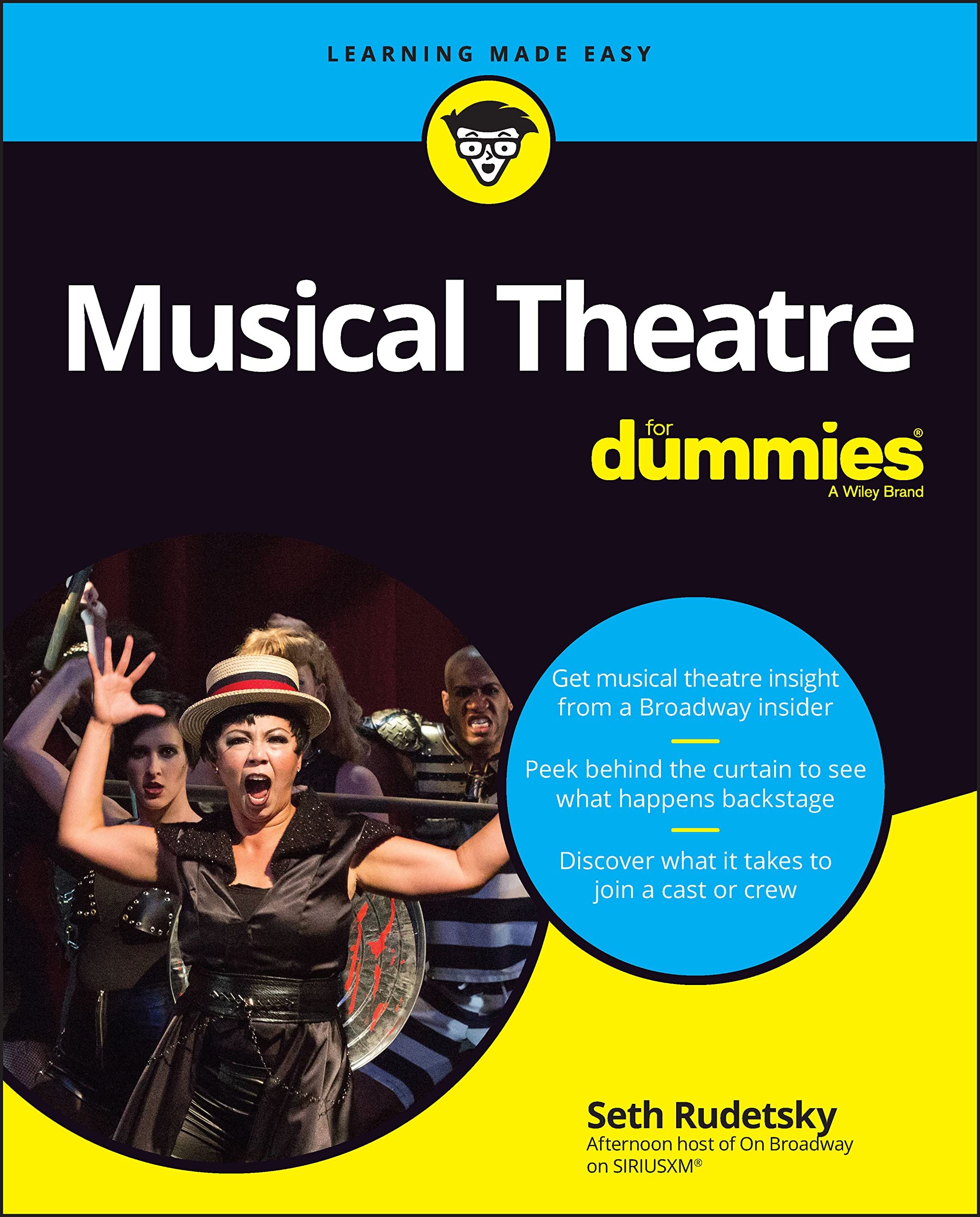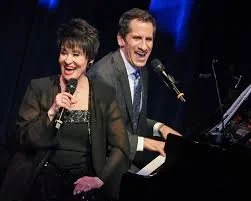Musical Theatre for Dummies, by Seth Rudetsky
—Cathy Ritchie
Musical Theatre For Dummies, by Seth Rudetsky (John Wiley & Sons, Inc., 2023)
Whichever publishing executive decided that Musical Theatre For Dummies should be added to this popular book series, and that it should be written by Seth Rudetsky, one of the most knowledgeable “theatre people” on the planet, deserves a raise and promotion: this book is simply wonderful, a (nearly) 400-page delight from start to finish.
Rudetsky brings to his mighty task decades of wildy varied experience as a rehearsal/orchestra pianist, music director. playwright, actor, radio show host, and man-about-theatre—and it shows. He offers readers of all stripes a soup-to-nuts view of the musical theatre art form, along with personal insights and an overflowing spirit that never flags. All this, plus—no mean trick—his text will absolutely appeal to both first-time students of the art form and to performance/theatre history aficionados. As Rudetsky states in his introduction: “This book is for people who know every little thing about Broadway, and it’s for people who have never heard of Cats, Wicked, or Hamilton. Like musical theatre, this book is for everyone.”
He starts with “Basics,” soon segueing into chronological discussion of the classic works that have been indispensable to musical theatre’s history and development, with always-interesting commentary along the way. (While this text, in keeping with others in the “Dummies” series, is spiced with important “Tips” and “Reminders,” his unique and entertaining “Seth Speaks” sidebars, with content based on his personal association with the works discussed and/or the creators involved, should not be skipped.) His 100 pages of historical prelude go quickly, as he then tackles the nuts and bolts of what we see on stage and beyond.
Chapters are devoted to the standard “parts” of a musical work, plus background on “where musical theatre takes place.” Rudetsky tutors us regarding physical stage construction and audience seating, how to buy tickets, and what to expect once you enter a venue’s front doors prior to performance time—along with a goodly dose of how to behave as an audience member. (Thank you, Seth!)
His sound advice is often spiced with wit: for example, under “Make smart jewelry decisions,” we’re advised that “When you see Meet Me In St. Louis, ‘clang, clang, clang’ should go the trolley—not your chunky necklace.” [A rare editorial note from Onstage: Also, do not go shopping right before the show in stores with crinkly bags; your seat neighbors will give you the side eye.] He also proves himself to be a practical man after my own heart, advising ticketholders entering the lobby to immediately run (don’t walk) to the restrooms, well before curtain time! Rudetsky leaves virtually nothing unexplained or bypassed.
The largest portion of his narrative salutes the more invisible “creators” of the shows we see: from the librettist and composer to the casting director; from the costume and hair designers to the backstage and prop crews, the spotlight operator, the dance captain, stage managers, and so many others. And, of course the performers, as he addresses the issues and practices behind how curtain calls are configured, how the understudy and swing systems work, how one’s cast status can affect Tony Award nomination potential, among much else.
Rudetsky is thorough and always engrossing, his enthusiasm and joy in the art form never flagging. Yet he doesn’t shy away from occasionally offering less-than-glowing opinions. While discussing the responsibilities of lyricists, for example, he adds: “Many new pop-type lyricists for theatre seem to think it’s edgy not to rhyme words. It is edgy, if edgy means lazy and lacking skill. #IWentThere.” These outspoken moments are rare but worth a look.
He also describes the “Hi-Ho Glamorous Life of a Broadway Performer,” including the backstage protocols and rules that must be followed by all cast members, including the various specific “calls” that must be followed to the letter and minute. He concludes with realistic yet non-discouraging advice on “Landing a Role (Paying Or Not!)” in tandem with a detailed description of the multi-layered audition process. I found the latter fascinating.
This is just an overview of the immense riches Rudetsky offers us in this book. I personally learned a tremendous amount, while simultaneously being allowed to reminisce about already-familiar theatre history and practices. The book’s Table of Contents is so detailed and reader-friendly that browsers or people seeking specific information should easily locate topics of interest. But I highly recommend start-to-finish reading: a delightful time will likely be had by all.
One minor fly in the ointment, however. This book clearly needed better pre-publication copy editing and fact-checking: I spotted several factual mistakes and a large number of typographical errors. The latter could likely be overlooked, as we all do when we read, but the surname of a legendary Tony/Oscar-winner was also misspelled throughout the entire text. I truly loved everything about this book, but that particular oversight was very disappointing to see and not worthy of this otherwise outstanding work.
One of Seth Rudetsky’s concluding pieces of advice to aspiring musical theatre practitioners is simply: be nice. That is, to everyone, from the stage door guardians to the backstage crew to fellow performers and the hard-working ushers. I can’t think of a more heartfelt way to conclude a remarkable guide to a joyous art form.
Find a copy of this book wherever you can, and prepare to be transported into a wonderful world.



